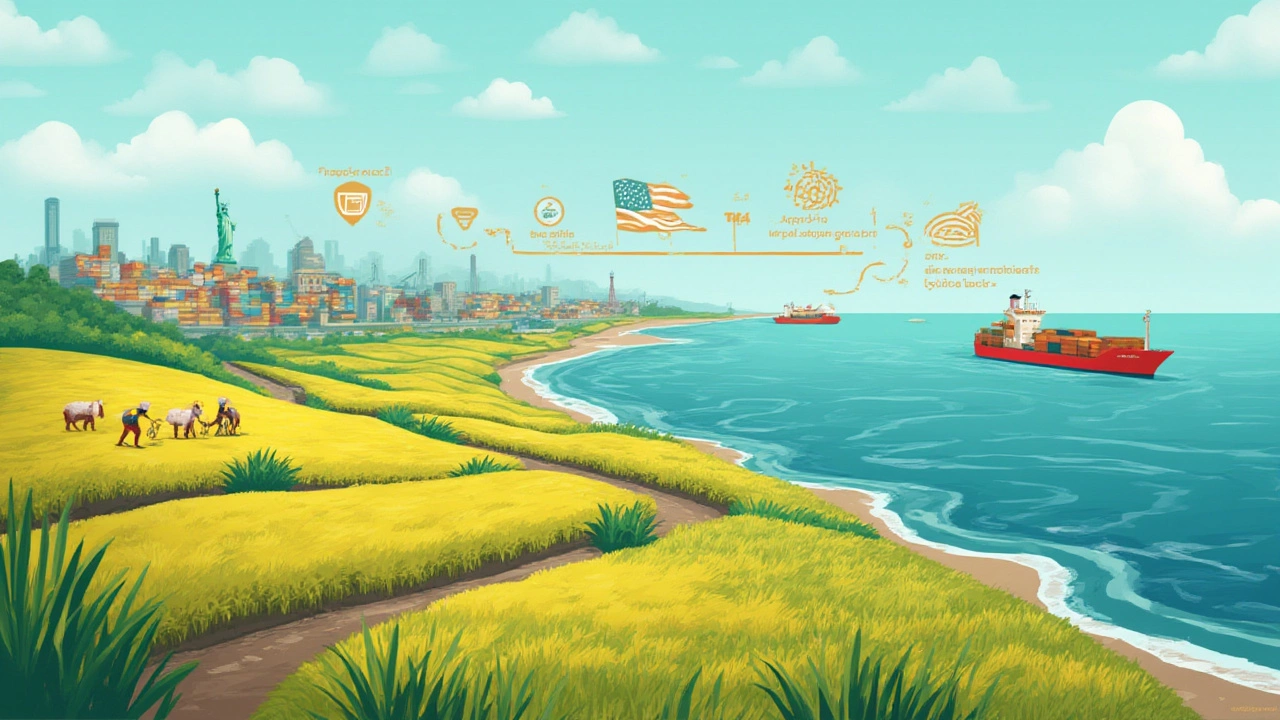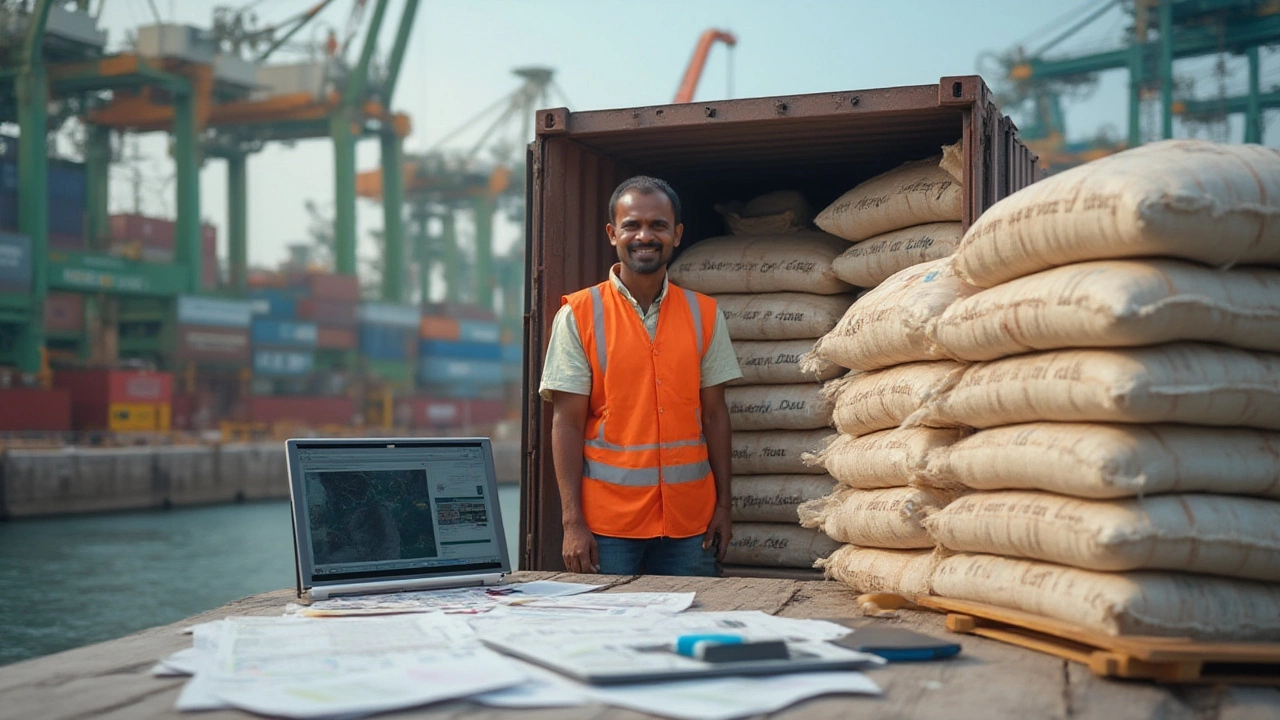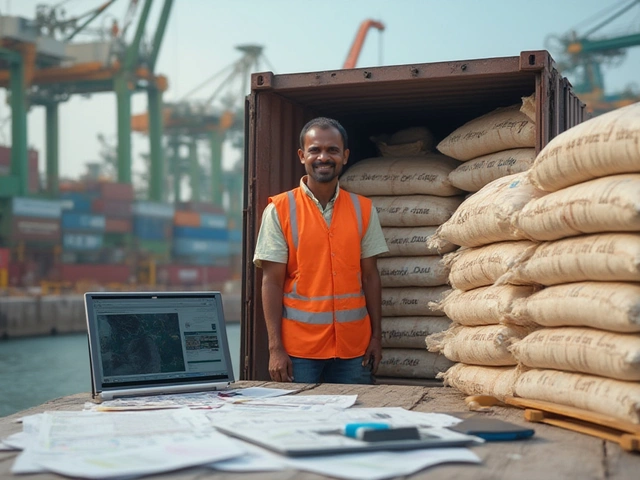Ever wondered if you can actually ship rice from India to the USA, or if the whole thing is some hidden trade mystery? There are rules, paperwork, surprise costs, and then—out of nowhere—strict customs peeking into your bags of basmati. Big companies do it all the time, but what if you’re an individual, a small business, or just homesick for a taste of home?
Understanding US and Indian Rice Shipping Rules
If you’ve ever tried to sneak a bag of rice in your luggage while flying, you know customs don’t mess around. But shipping rice in bulk or even small amounts has its own complicated playbook. First off, the US Food and Drug Administration (FDA) treats rice like any other food product coming from abroad. This means even your prized family farm batch isn’t getting through without paperwork and checks.
The thing is, the USA strictly enforces the Food Safety Modernization Act (FSMA). If your rice is being shipped for commercial purposes, you’ll need your name on the FDA’s list. This involves registration of the exporting facility and prior notice of food shipment before it even gets packed into a container. The US Customs and Border Protection (CBP) team then demands exact details—origin, quantity, supplier info, and all that jazz. If there’s a slip-up, your rice could face long detentions or, worse, get rejected outright.
India’s own rules aren’t much simpler. If you want to send out big shipments, you need to sign up as an exporter with the Directorate General of Foreign Trade (DGFT) and score an Importer Exporter Code (IEC). India loves paperwork, so be ready for some patience-testing forms. On top of that, certain types of rice, like those containing GMOs, aren’t welcome in the USA at all. Even popular polished basmati needs to meet US residue standards for pesticides and contaminants.
Now, let’s talk about what you shouldn’t do. Trying to skip the paperwork for a quick package to a relative in New Jersey? Yeah, there’s a risk. Customs randomly checks packages, and if yours gets flagged for lack of documents, you could face fines or lose your rice altogether. Some folks gamble on sending small quantities via post, thinking nobody will notice. The truth? They sometimes do, especially after some importers tried to sneak banned grains or pest-infested shipments that messed up local crops in the past.
There’s also the long memory of the infamous 2011 case: 112,000 metric tons of Indian basmati were held up because a few knocked-off exporters ignored aflatoxin (a toxic fungus) limits. Not only did they lose a fortune, but it pushed up rice prices for months. Moral of the story—no shortcuts if you want your rice (and reputation) safe.

Shipping Process and What It Really Costs
Alright, so you’re ready to be legit about shipping rice from India to the USA. The process looks technical, but broken down, it’s manageable—if you keep calm and stay organized. Here’s what you need:
- Get registered as an exporter (IEC code in India).
- Find a US importer or send as an individual (keep it small for personal use).
- Make sure your rice is milled, packaged, and labeled properly, showing origin, weight, variety, and no illegal additives.
- Request pre-shipment inspection and certification (to show your rice isn’t harboring pests or toxins).
- Submit a Prior Notice to the FDA (preferably 24 hours before shipment—non-negotiable for commercial users).
- Attach your phytosanitary certificate to prove the rice is pest-free and safe for import.
- Use a trusted international shipping or courier service—DHL, FedEx, and specialized food exporters know these ropes.
If you only want to send up to 5 kilograms for personal use, the process skips some steps, but your package can still be flagged and examined. Commercial shipments (over 5kg or for resale) must go through mandatory checks, customs clearance, and can’t skip FDA registration.
How much will shipping set you back? Post-pandemic, rates are wild. International courier rates for up to 5kg hover from $40 to $80, depending on the courier and city in India. Standard container loads (around 20 feet) for wholesale orders run $1,500–$3,000, with prices shooting up or down based on global demand and fuel costs.
Here’s a table of typical rice shipping charges (2025 rates):
| Quantity | Type | Shipping Cost (avg.) |
|---|---|---|
| 1-5 kg | Personal | $40-$80 |
| 6-25 kg | Non-commercial/personal | $90-$200 |
| 100 kg+ | B2B Bulk | $700-$1600 |
| Full Container (20ft) | B2B Wholesale | $1,500-$3,000 |
There are other costs, too—customs duties, courier markup, and the occasional surprise FDA inspection fee. Playing it safe? Budget a little extra. Someone once shared that a 10kg parcel from Hyderabad to Chicago with all paperwork ran him about $155, but he barely escaped an extra $50 on customs when the box got randomly opened for inspection.
Also, food items, rice included, can sometimes face extra scrutiny if you’re shipping from a location flagged for pests. Certain Indian states at times get on USDA’s radar due to past pest problems (hello, West Bengal and Punjab). If you’re shipping from one of these zones, triple-check all documentation—especially the phytosanitary certificate with proper English translations.

Tips, Red Flags, and Insider Know-How
It’s easy to get overwhelmed by all the red tape around rice shipments. But there are ways to make your life a lot easier—and avoid rookie mistakes. First tip? Only ever use ship rice from India to USA services you've verified with reviews and preferably ask friends in the US who import Indian groceries about their go-to courier.
If you’re planning to sell the rice, ask your importer in the USA about their FDA registration. Both sender and receiver need to be clear about who’s handling the paperwork, or you run the risk of the infamous “left to rot at customs” scenario. For commercial orders, always use international couriers who offer customs clearance service as part of the delivery—this sounds obvious, but some budget shippers leave you to fend for yourself when things go sideways.
For personal use, keep it small, under 5 kilograms. Label everything: sender details, description (“Milled white basmati rice, for personal use, non-commercial, origin: India”), and stick to vacuum-sealed packaging. This slows down pests and makes FDA and CBP checks smoother.
Avoid mixing rice with other food stuffs in the same package. One guy threw in some dried mangoes for his cousin; customs flagged the whole box for banana weevils, and nothing made it out. Stick to one type of food item per package if you want a hassle-free trip through customs.
If you’re sending out commercial shipments, demand regular lab testing from your supplier—both pesticide residue and heavy metals like lead and arsenic. The FDA has grown extra sharp over the past few years, especially after that 2022 scandal where several brands got flagged for lead contamination.
Want another pro tip? Sign up for SMS or email alerts with your courier and the FDA's import tracking system. This lets you know instantly if your shipment is being held, so you can act fast and send any extra paperwork before things get expensive. And don’t forget: there are rice varieties (like Golden Rice, a genetically engineered type) that are flat-out banned in the US, so double-check your exact variety.
If you dodge shortcuts, prep your paperwork, and stay up-to-date on rules—rice shipping is totally doable, whether you’re stocking your own pantry or dreaming of starting a small food business. It just takes a mix of patience, prep, and learning from everyone else’s hard lessons. And hey—if you run into issues, don’t hesitate to pester your courier for real answers. Trust me, even my dog Max could tell you, persistence (and a little growling) gets things done.

